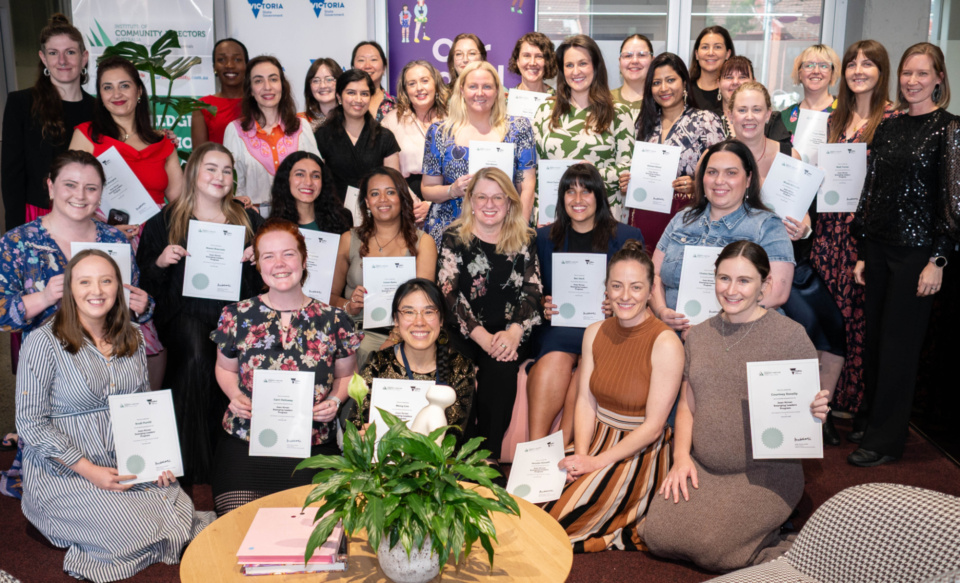
Why meetings can harm employee well-being
Posted on 10 Dec 2025
Anyone working in an organisation knows it: meetings follow one after another at a frantic pace. On…

The Community Compass Report is not only a fascinating piece of research, it is vital information for anyone who has a role in fundraising in the not-for-profit sector.
The research, which was commissioned by Our Community and the Community Council for Australia and undertaken by Dr Rebecca Huntley for 89 Degrees East, was developed, funded and now published with a very clear call to action.

As the Assistant Minister for Charities, Dr Andrew Leigh, wrote, “It challenges policymakers, community leaders, and citizens alike to recognise the contributions of the community sector.”
The report provides important evidence that community fundraisers can use when they need to:
We must use this information to boost our fundraising efforts, be more strategic in our approach to running community organisations, and engage and support those within our community who have a greater capacity to give time, knowledge and (importantly) funding.
The Community Compass report uses an audience segmentation ‘compass’ – a tool that has been traditionally used to understand, engage, target and mobilise audience cohorts, particularly when it comes to advocacy, action and behaviour change campaigns.
The compass sets out:

This research ‘key’ can help you to unlock additional support for your community organisation, whether that means additional volunteering hours, more knowledge and guidance to increase your impact, or increased funding at a time when the rise in the cost of living means your organisation is probably experiencing great demand for its services.
The six points of the compass are:
The strongest supporters of the community sector are socially connected and are active contributors to community organisations.
The Positive Preoccupied are broadly supportive of the community sector but contribute less regularly. They are more likely to be juggling work, raising children and other responsibilities and feel they lack the time and energy to be more involved.
The Isolated Believers have a positive view of the community sector despite being the most economically and socially vulnerable segment. They support community organisations speaking out on social and political issues but believe service delivery should be prioritised. Many would like to be more involved but face barriers to contributing.
The Active Traditionalists are very community-focused and are actively contributing to the sector at higher rates than average. They hold broadly conservative values and their traditionalist mindset shapes their belief that the role of the community sector is to care for those in need rather than getting involved in politics.
The Indifferent Uninvolved aren’t thinking about the community sector. They are relatively socially connected and express insular values such as ‘having fun’, ‘treating and rewarding yourself’ and ‘being successful and achieving goals’.
The Begrudging Bygones are more likely to be contributing to their community but have a pessimistic view of the community sector and society as a whole. They don’t think the sector should receive government funding.
"What inspires someone to become and stay engaged and enthusiastic about an organisation, a leader or a program will be different for every funder."
The practice I manage, Wendy Brooks & Partners, works with organisations to help them increase the number of their supporters that fall under the definition of “Enthusiastic Engaged.”
This group cuts across multiple market segments, including trusts and foundations, mid-major donors, gifts in wills, and even regular donors – the average Australian regular donor gives $33 per month and may become part of the pipeline of gifts in wills.
There are thousands of trusts and foundations in Australia, and even more private ancillary funds (PAFs) and public ancillary funds (PuAFs). Your organisation will need to first work out what trusts and foundations match your focus areas and can give in the ways that your organisation requires, and then determine how to best build relationships with those funders to maximise your ability to gain a return on investment.
Those trusts and foundations that meet the requirements of ‘best chance funders’ are those that:


At a recent event we asked some of our key donors to provide an example of a project or organisation they had funded that they felt proud to have supported. Their responses were fascinating:
What inspires someone to become and stay engaged and enthusiastic about an organisation, a leader or a program will be different for every funder, but there are some commonalities:
Here are some practical steps you can take to harness the power of enthusiastically engaged supporters and create more of them:
Time for a national discussion on the value of community
Proof we've got to do more for the community sector
Reaction to the Community Compass from NFP sector
Study reveals what Australians really think of the community sector
Comment: “Whatever your attitude towards community groups, one day you’re going to need them”
Finding a new north: reflections on the Community Compass report

Posted on 10 Dec 2025
Anyone working in an organisation knows it: meetings follow one after another at a frantic pace. On…

Posted on 10 Dec 2025
As a qualified yoga instructor who learned the practice in her hometown of Mumbai, Ruhee Meghani…

Posted on 10 Dec 2025
Community Directors trainer Jon Staley knows from first-hand experience the cost of ignoring…

Posted on 10 Dec 2025
Stressed, overwhelmed, exhausted… if you’re on a not-for-profit board and these words sound…

Posted on 10 Dec 2025
The Institute of Community Directors Australia trains over 22,000 people each year, which gives us…

Posted on 03 Dec 2025
Many not-for-profit (NFP) board members in Australia are burnt out, overwhelmed and considering…

Posted on 26 Nov 2025
A roll call of Victoria’s brightest future leaders has graduated from a testing and inspiring…

Posted on 12 Nov 2025
At the Institute of Community Directors Australia, we believe that stronger communities make a…

Posted on 12 Nov 2025
Like many Community Directors members, Hazel Westbury is a community leader who isn’t easily…

Posted on 11 Nov 2025
I’ve seen what happens when fear of conflict wins out over taking a principled stand.

Posted on 11 Nov 2025
‘It’s not a question of enough, pal. It’s a zero-sum game. Somebody wins and somebody loses’.

Posted on 11 Nov 2025
Progressive economic Richard Denniss believes the constant hunt by governments for the political…